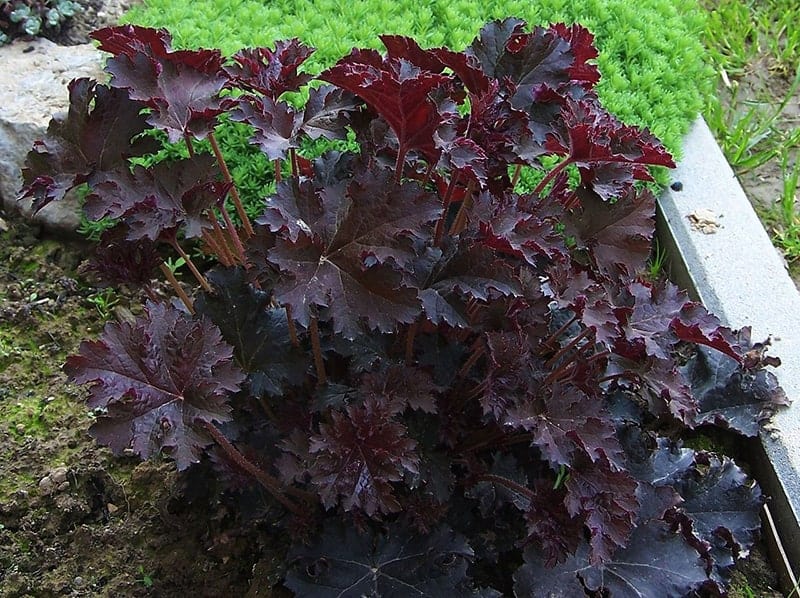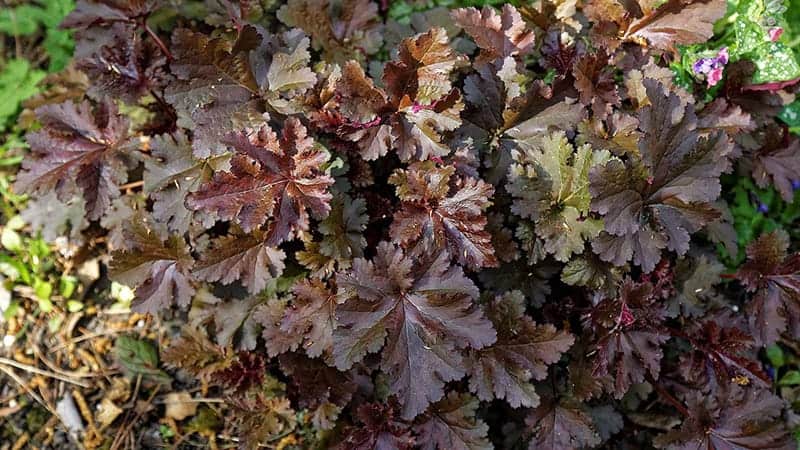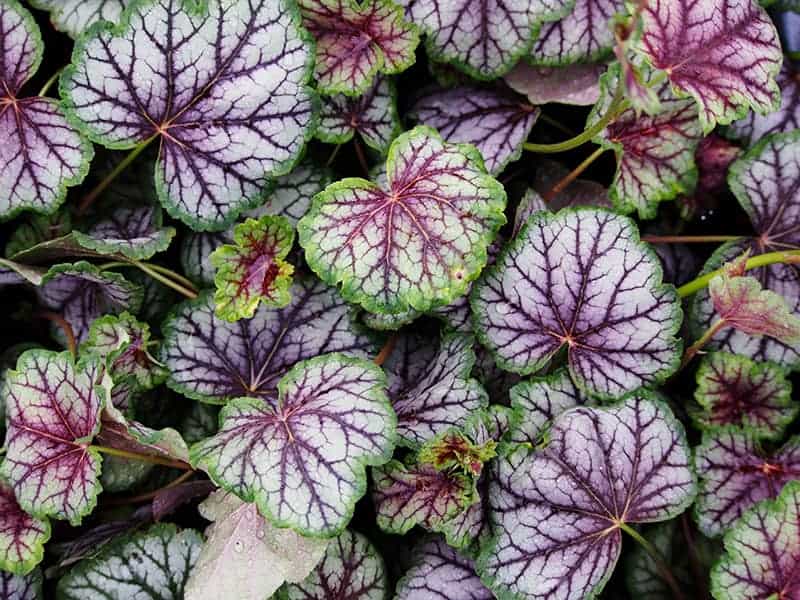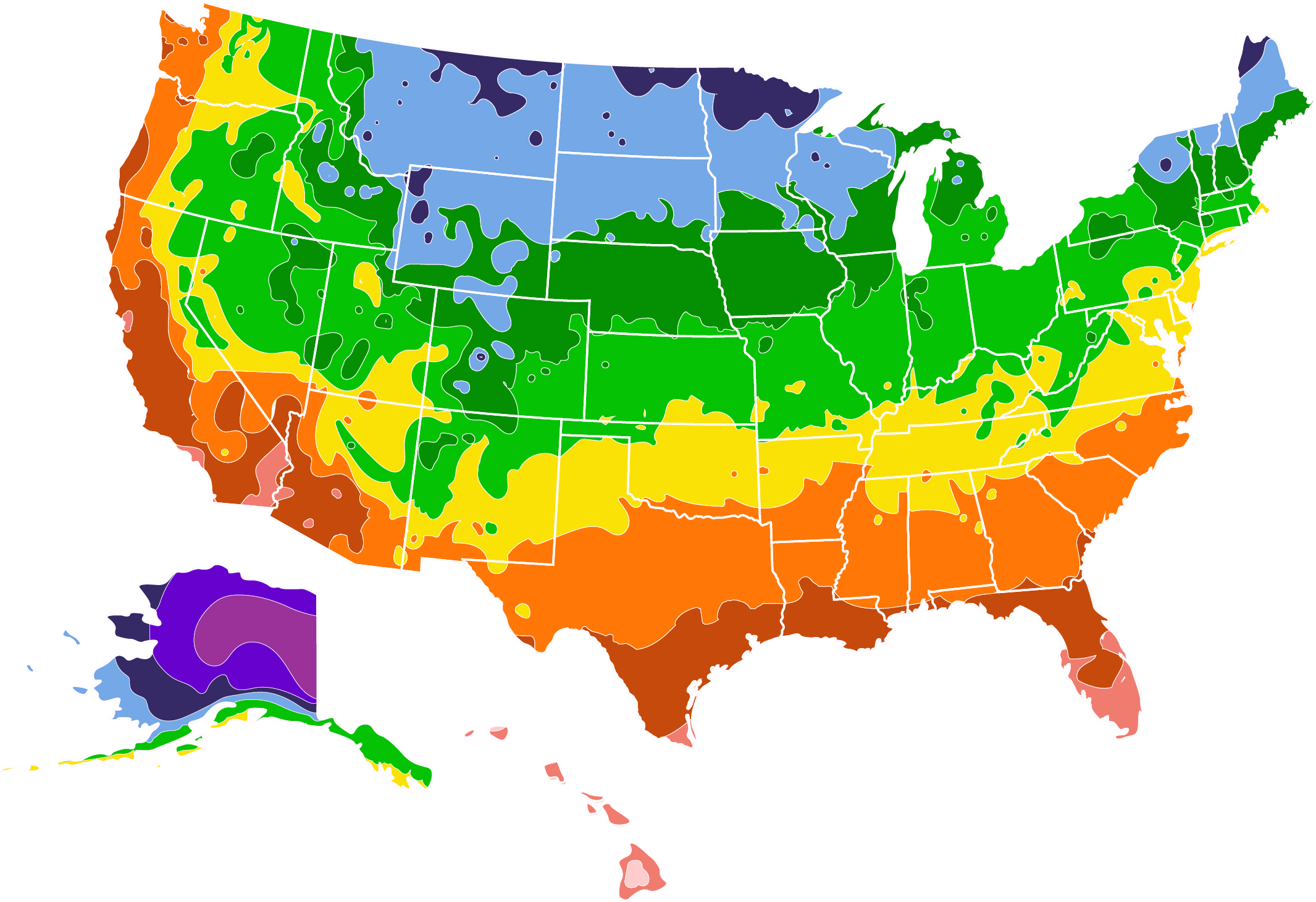Heuchera for Sale - Buying & Growing Guide
Plant Care
Sunlight
Partial shade is the best sun exposure for this plant. Four to six hours per day is ideal.
Watering
Water weekly by default. However, this plant can withstand mild drought.
Fertilizing
Fertilization needs are low. Adding too much fertilizer can diminish blooms.
A shade-loving perennial foliage plant that works well for borders, ground cover, and container gardens, Heuchera, more commonly known as coral bells or alumroot, is a versatile yet low-maintenance plant. Landscapers and gardeners frequently turn to heuchera to add color and texture to gardens, as they are useful in complementing the colors and forms of nearby plants. Other unique heuchera characteristics include:
- Available in multiple varieties, which feature an array of colors
- Ability to attract hummingbirds and butterflies
- Depending on the specific cultivar, can be hardy in zones 3-11
Planting and Care
Planting instructions
Native to the North American woodlands, most heuchera varieties grow in hardiness zones 4-9. A few rare cultivars can withstand hotter and colder climates. The tall blooms and mounding habit of heuchera make them ideal for garden beds and borders. They prefer well-draining, humus-rich soil that is neutral or slightly acidic. Space plants about one foot apart and dig a hole 12-15 inches deep for the root ball, as their roots are fairly shallow. When choosing a location, consider how much light it will get. Most heuchera varieties do well in partial shade, but those with darker colored leaves will also tolerate full sun.
Watering and nutrients
While consistently moist soil helps coral bells thrive, once established, they can tolerate some drought-like conditions. The position of your plant also affects how much water it needs, as plants in full sun conditions dry out faster than those in partial shade. Do not overwater your heuchera, as these plants are susceptible to crown rot if they sit in waterlogged soil. Make sure your soil drains well, and check the moisture level of the soil before watering. Heucheras have minimal feeding needs; feed your plant in the spring with a half-inch layer of compost or a light, slow-release fertilizer.
Pollination
Gardening experts praise coral bells as an ideal addition to a home garden if you are looking to attract pollinators. The flowers of the heuchera plant produce a rich, sweet nectar that can attract birds and insects for several weeks during the growing season.
Pruning
Coral bells are relatively low maintenance when it comes to pruning. You can prune these plants in the spring to remove dead or damaged foliage, as well as woody stems with no new growth. This will help maintain your heuchera’s health and appearance. During the summer, you can deadhead spent flowers. Although these plants generally do not rebloom, deadheading flowers will encourage foliage growth and prevent fallen flowers from covering the foliage, which can lead to fungal growth. Also, removing the flowers while in bloom is a common tactic to encourage leaf growth. Use clean, sharp pruning shears when trimming heucheras.
Pests, diseases, and animals
The most common diseases affecting coral bells are bacterial diseases, including pseudomonas, xanthomonas, and botrytis, which are caused by humid conditions, poor air circulation, and lack of drainage. These diseases often cause discoloration on leaves. It can be difficult to remedy the situation once plants are infected, so it’s best to prevent infections by keeping plants well-ventilated and well-drained. Black vine weevils are a common pest affecting heuchera. You can prevent infestations by keeping the area around your plants free of debris, or treat an infestation by removing and destroying the larvae. Heucheras are resistant to deer and rabbits.
Light
Coral bells grow well in any light from full sun to partial shade. They are technically a shade-loving plant and are recommended for planting in partial shade with a maximum of 6 hours of sun each day. They grow natively in woodland areas where they are partially shaded by an overhead canopy of trees, so to recreate these conditions in your garden, you will need to provide some shade from nearby shrubs or fencing. However, these plants typically will thrive in any lighting location, and you don’t need to worry too much about their planting position.
The ideal position for planting will depend on the variety because generally, the coral bells with darker colored leaves are happier to tolerate full sun than those with paler foliage. In very hot areas, the foliage may experience some discoloration, which looks like bleaching from the sun, but generally, most coral bells will adapt well to full sun locations. As with most plants, it is a good idea to keep coral bells out of the direct sun in the afternoon in particularly hot climates. Afternoon shade will offer them some protection against the hottest temperature of the day.
Temperature
Coral bells thrive in US hardiness zones 5 to 7, though many varieties will grow in USDA zones 3 to 11. In frost-prone areas, the crown of the plant may rise out of the ground. This happens when the soil underneath freezes and thaws and pushes the plant upward. Mulching your plant may help to protect it against the problem, offering a layer of insulation. If the crown does become prominent from the soil, the best course of action is to replant it (University of Vermont Extension).
Flowers
Bell-shaped flowers bloom on tall spikes that sit high above the foliage of this plant, in rosey shades, which is how this plant got its common name of ‘coral bells.’ This plant was once cultivated purely for its pretty flowers, but more often, it is now grown for its interesting foliage, which gives it interest all year round in some areas.
The flowers typically bloom in June, though late-blooming varieties are available. They bloom profusely for the first four weeks, then continue blooming for a further eight weeks at a much slower rate. The flowers are attractive to hummingbirds and other pollinators and make pretty cut flower bouquets, though once cut, they only have a lifespan of around three days.
Propagation
Coral bells can be propagated from seed, stem cuttings, and through division. To grow from seed, you can sow them indoors in seed trays or directly in the ground outside. Growing indoors will give you a head start on the season, as you can sow them anywhere from 2 to 8 weeks before the final frost is expected.
To sow the seeds, scatter them sparsely over moist potting soil. Each seedpod contains many seeds, so they shouldn’t be too close together. Don’t cover the seeds over as they need light to germinate. Mist them with water periodically to maintain slightly moist soil. The seeds typically germinate in 2 to 8 weeks. Their roots develop quickly, so you will need to thin them out quite quickly once they have several leaves to prevent the seedling from becoming too tangled.
Their roots are quite robust, and the plants can survive with even heavy damage to the roots, so don’t worry if you have to break a few roots in order to separate the seedlings. Move the seedlings to larger pots or plant them directly outside if the last frost has passed.
You can also sow the seeds outdoors with the same method, but you will need to wait until any frost risk has passed. Propagating from seed works well for coral bells, but it may not produce a plant identical to the parent. If you want the plant to be a copy of the parent, you will need to propagate from stem cuttings or division.
Coral bells are typically ripe for division around 3 or 4 years into their lives. They can become overgrown and messy, so dividing them helps to rejuvenate them and also gives you more plants for the rest of your garden. To divide the plant, carefully dig up the roots and tease them apart with your hands, then use a sharp tool to cut the remaining tangled roots and the crown of the plant. It is wise to take as much care as possible not to damage the plant when dividing, but it will be able to sustain a reasonable amount of damage and still be able to grow well when re-planted.
Heuchera Varieties
These are some of the most commonly found and grown types of heuchera (coral bells) you can find in the garden.
‘Plum pudding’

Deep purple foliage sets this variety apart, along with creamy patches on the leave, divided by purple veining. It will survive in any light condition and is compact in terms of height, growing to around 12 inches tall.
‘Palace purple’

The foliage of this variety is dark while being subtle. The leaves are reddish-green tinged with dark purple.
‘Caramel’

The rich orange-yellow color of this plant’s foliage is truly beautiful. It has a luxurious feel to it and looks especially good in fall displays. It prefers a shaded location and isn’t recommended for full sun.
‘Lime rickey’

This variety of coral bells has brightly colored lime leaves that are almost neon. The texture of the foliage is also interesting, with a frilled edge.
‘Chocolate ruffles’

As the name suggests, the foliage of this plant is ruffled, and brown in color. The underside of the leaves is contrasting in deep purple.
‘Tiramisu’

The leaves of this plant change color throughout the year, varying from yellow to red.
‘Green spice’

The foliage of this plant is green and silver with dark red veining. It is an exceptionally hardy variety.
FAQs
How do you propagate heuchera?
Are there different varieties of heuchera?
Yes, there are many varieties of heuchera, noted for their rainbow of different colors and food-inspired names. Some of the most popular varieties include ‘Chocolate Ruffles,’ which have ruffled leaves that are a chocolatey brown on top and deep burgundy on the bottom; ‘Plum Pudding,’ a compact variety that has deep purple foliage; ‘Caramel,’ which gets its name from its rich golden-orange color, and ‘Lime Rickey,’ featuring bright, almost neon-green leaves.
How much light does heuchera need?
The lighting needs of the heuchera plant vary somewhat based on the specific species in question. In nature, heuchera grows on the forest floor, where it receives partial sunlight through the tree canopy. If your garden has these conditions, or you can mimic them, most heuchera varieties will grow quite well. However, varieties with darker leaves will tolerate full sun, especially when grown in a climate with moderate temperatures. Lighter-colored plants may experience bleaching from full sun exposure.
Are heucheras perennials?
Yes, coral bells are perennials — with a caveat. They are short-lived perennials, so don’t expect your heuchera to bloom indefinitely. The average lifespan of coral bells is 3-4 years, after which point they will start to turn woody and overgrown. Lifespan tends to be shortest when this plant grows in or past the warmest part of its hardiness range. A good way to ensure a continued heuchera presence in your garden is to divide and replant existing plants, which encourages new, healthy growth. During its lifespan, you can expect heuchera to be a low-maintenance yet rewarding addition to your garden.
Are heucheras poisonous?
Another benefit of coral bells is that these plants are non-toxic to humans and common household pets like cats and dogs. Therefore, this plant is a good choice for your garden if you have small children or curious four-legged friends. Despite being non-toxic, deer and rabbits avoid coral bells, which also make them an appealing garden addition if these creatures frequent your property.















